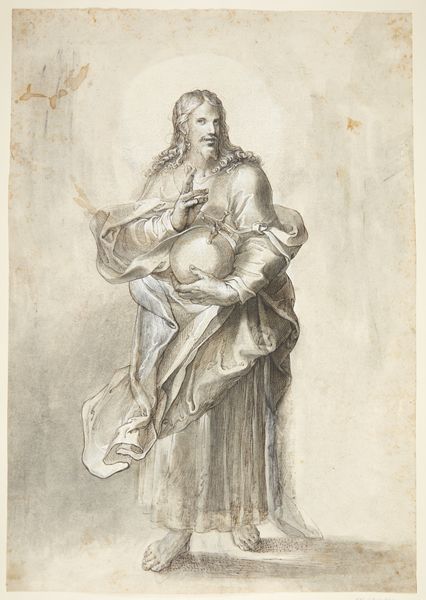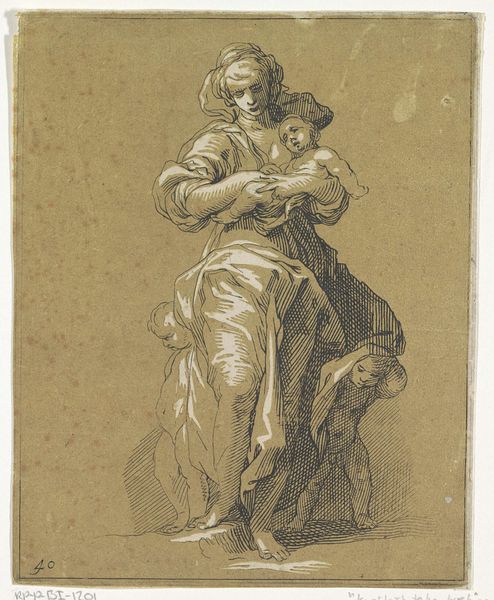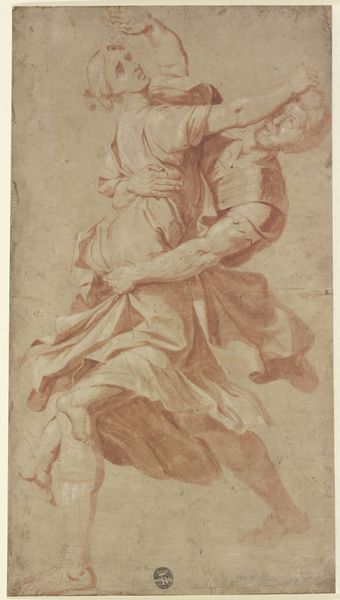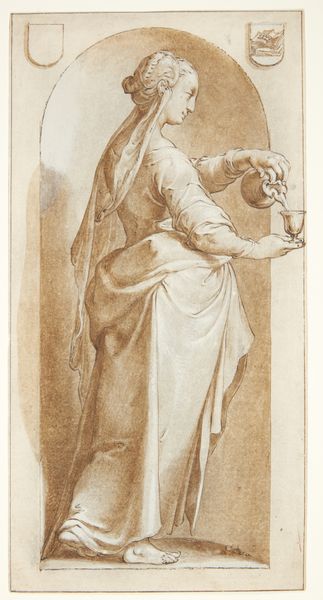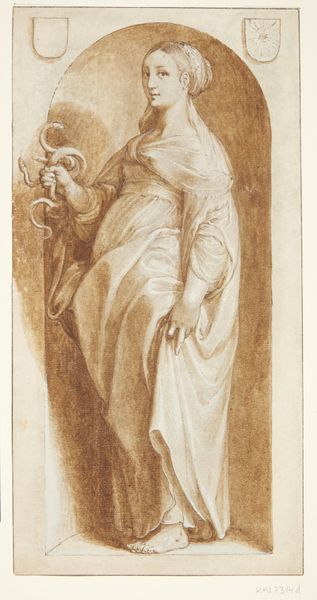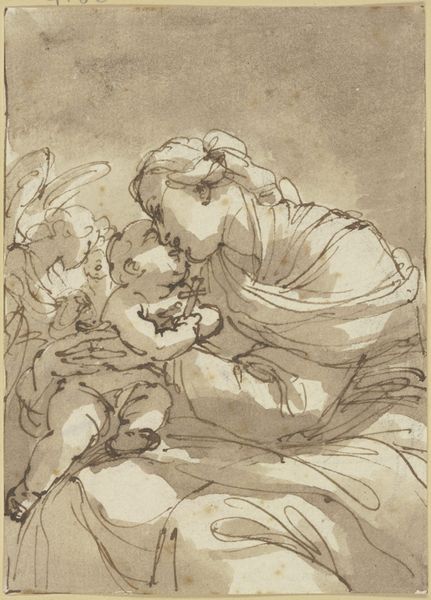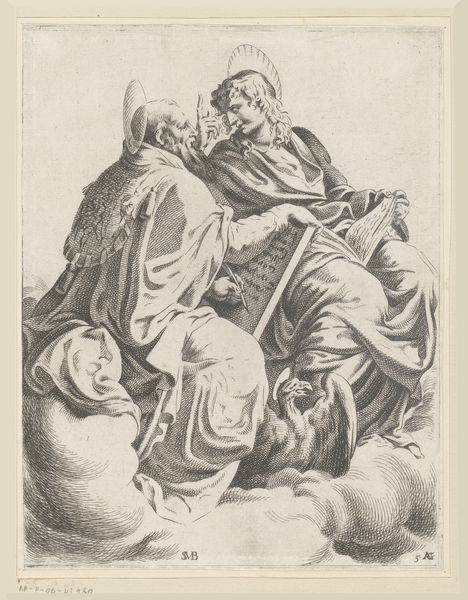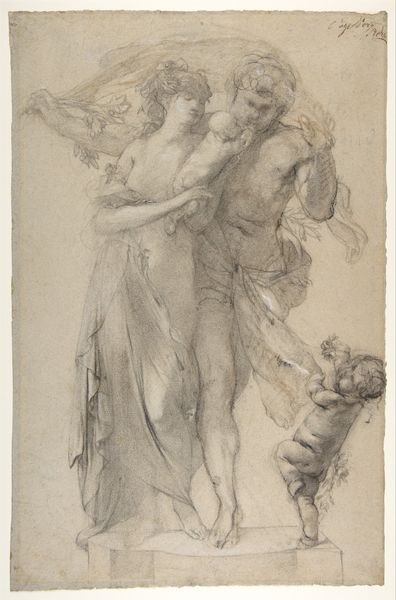
drawing, graphite, charcoal
#
portrait
#
drawing
#
charcoal drawing
#
mannerism
#
graphite
#
portrait drawing
#
charcoal
#
history-painting
#
graphite
Dimensions: 430 mm (height) x 294 mm (width) (bladmaal)
Curator: Here we have Matthäus Gundelach's rendering of Bartholomew, one of the twelve apostles, likely created sometime between 1566 and 1654. The work's medium consists of graphite and charcoal on paper, and it's currently held in the collection of the SMK, the National Gallery of Denmark. Editor: I must say, seeing him from this angle—back turned, deeply engrossed in that hefty book—gives me the peculiar sensation of interrupting a very private moment, like catching him reading my diary! There's an undeniable solemnity about it. Curator: Indeed. The mannerist style certainly lends to that gravity. Notice how Gundelach emphasizes Bartholomew's form through dramatic lighting and elongated proportions. The subject appears dignified and intellectual. It speaks to the rising importance of textual authority within religious and academic circles during that period. Editor: Textual authority... or just a really compelling page-turner? Kidding, mostly! Seriously, though, what strikes me is how vulnerable this rendering feels. Despite his flowing robes, he's barefoot, almost grounded, and humanized despite his symbolic role. Curator: Interesting take. We also ought to acknowledge how portraiture in this period—particularly depictions of religious figures—became potent tools in the shaping of social and religious identities, reflecting a more personalized piety. Editor: Precisely! Think about how seeing the folds in his garments and individual hairs makes him approachable—it’s less about celestial glory, and more about conveying relatable emotion, of interiority. Which, honestly, makes his convictions, his beliefs, seem even weightier, even more affecting. Curator: An astute observation. The success of this drawing lies, I believe, in that subtle interplay between the divine and the human, shaped profoundly by its historical setting and social role. Editor: Well, regardless, it makes me want to know what he’s reading— maybe something I should add to my own reading list! A fascinating dance between the earthly and the spiritual rendered in graphite.
Comments
No comments
Be the first to comment and join the conversation on the ultimate creative platform.

